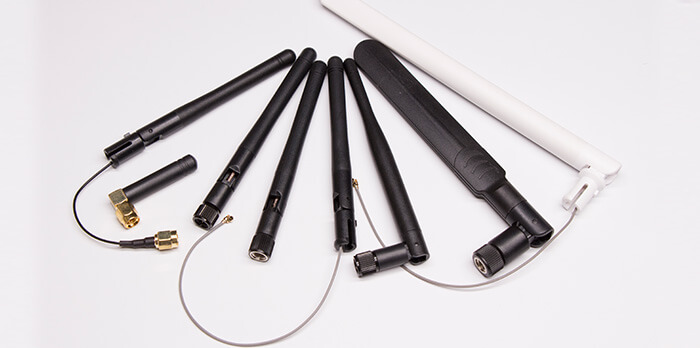Passive and Active Testing of Mobile Phones
At present, in the RF performance test of mobile phones, more and more attention is paid to the test of the radiation performance of the whole machine. This radiation performance reflects the final transmission and reception performance of the mobile phone. At present, there are two main methods to investigate the radiation performance of mobile phones: one is to determine the radiation performance of the antenna, which is a relatively traditional antenna test method, called passive test; the other is in a specific microwave dark room. Testing the radiant power and receiving sensitivity of a mobile phone is called active testing.

The passive test focuses on the radiation performance of the mobile phone from the radiation parameters of the antenna, such as gain, efficiency, and direction of the antenna. Passive test considers the influence of the whole machine environment (such as the device around the antenna, the cover and the cover) on the performance of the antenna, but the final radiated transmit power and receiving sensitivity after the antenna is matched with the whole machine, the passive test data cannot be obtained. It is directly known that the test data is not very intuitive.
The active test focuses on the radiation performance of the mobile phone from the transmission power and receiving sensitivity of the mobile phone. The active test is to test the transmission power and receiving sensitivity of the whole machine in all directions in three dimensions in a specific microwave darkroom, and more directly reflect the radiation performance of the whole mobile phone.
The CTIA (Cellular Telecommunication and Internet Association) has established standards for OTA (Over The Air). The OTA test focuses on testing the radiation performance of the whole machine and gradually becomes a test item that is recognized and recognized by mobile phone manufacturers.
Purpose of the OTA test
At present, only mobile phone models that have passed the FTA (Full Type Approval) certification test can be put on the market. In the FTA test, the RF performance test mainly tests the RF performance of the mobile phone in the cable connection mode; as for the radiation emission and reception performance of the mobile phone, There are no clear rules in the FTA test, and the OTA test just makes up for the shortcomings of the FTA test in this area. At the same time, the terminal manufacturer must have a clear understanding of the radiation performance of the mobile phone produced, and through various measures to improve the emission and reception indicators of mobile phone radiation. If the radiation performance of the mobile phone is not good, it will cause problems such as poor cell phone signal, poor voice call quality, and easy dropout. This is also a problem of more customer complaints.
When the mobile phone is talking, since the human brain is close to the antenna of the mobile phone, the transmission and reception performance of the mobile phone will be lowered, and the transmission and reception performance of the mobile phone of the mobile phone will be reduced. In the mobile phone development process, the impact of the human brain on the transmission and reception performance of the mobile phone should be quantitatively measured, and the optimized design should be performed so that the transmission and reception performance cannot be reduced too much, that is, the electromagnetic coupling effect of the human body and the antenna is reduced.
In order to investigate the radiation performance of mobile phones, in addition to examining the passive performance of mobile phone antennas, the active performance of the whole machine is also an important aspect. At present, the active performance of the whole machine is more and more valued by the terminal manufacturers. Therefore, in the investigation of the radiation performance of the mobile phone, the two kinds of radiation performance should be considered together. At present, terminal antenna manufacturers generally require antenna suppliers to provide passive and active test reports in research and development.
OTA test and other major parameters of the mobile phone
2.1 Main Test Parameters and Related Calculations in OTA Test In the OTA test, the radiation performance parameters are mainly divided into two categories: receiving parameters and transmitting parameters.
The transmission parameters are TRP and NHPRP; the receiving parameters are TIS and NHPIS.
TRP (Total Radiated Power): obtained by dividing and averaging the emission power of the entire radiation sphere. It reflects the transmission power of the whole mobile phone, which is related to the transmission power and antenna radiation performance of the mobile phone in the case of conduction.
The TRP index is generally expected to have a large TRP, so that the power from the PA to the antenna is effectively radiated, and the connectivity of the wireless interface is better.
NHPRP (Near Horizon Partial Radiated Power): A parameter that reflects the transmission power of an antenna near the H-plane of a mobile phone. (2D TRP)
TIS (Total Isotropic Sensitivity): Reflected in the radiation sensitivity of the entire spherical surface. It reflects the receiving sensitivity of the whole mobile phone, which is related to the conduction sensitivity of the mobile phone and the radiation performance of the antenna.
NHPIS (Near Horizon Partial Isotropic Sensitivity): A parameter that reflects the receiving sensitivity of the antenna near the H-plane. (2D TIS)
Receive sensitivity is the minimum received signal power that the receiver can correctly take out the useful signal. It is related to three factors: thermal noise in the bandwidth range, the noise figure of the system, and the minimum signal-to-noise ratio required for the system to take the wanted signal out. The thermal noise in the bandwidth range passes through the receiver, and the noise is amplified by NF times. To take the useful signal out of the noise, the wanted signal must be SNR times larger than the noise. In order for the receiver to “hear clearly” the transmitter “speaks”, the signal level strength must be greater than the receiver’s receiving sensitivity. Of course, the smaller the receiving sensitivity, the better the receiver’s receiving performance is, just like the dog can hear the weak sound that humans can’t hear, indicating that the dog’s hearing is higher than the human sensitivity; the higher the receiving sensitivity, the receiver’s receiving The worse the performance, just like some old people are deaf, you need to speak with a big voice, he can hear. The higher the ambient temperature, the greater the sensitivity and the deterioration of the receiving performance. Therefore, the ambient temperature of the system should be minimized. The larger the bandwidth, the larger the noise figure of the system, the greater the sensitivity, and the worse the reception performance. This requires the design of the receiver to take into account the bandwidth and noise figure of the system.
RSSI
Received Signal Strength Indication The received signal strength indication, an optional part of the wireless transmission layer, used to determine the link quality and whether to increase the broadcast transmission strength.
The difference between RSSI and Rx:
RSSI: Received Signal Strength Indicator Rx: Recieived power
The biggest difference: Rx is the mobile phone side indicator; RSSI is the base station side indicator. Both are the same concept, specifically referring to the (forward or reverse) receiver receiving the broadband received power on the channel bandwidth. In practice, the forward link receiver (referred to as the handset) is usually represented by Rx, and the reverse link receiver (referring to the base station side) is usually represented by the reverse RSSI. The forward Rx is usually used as the basis for the coverage (of course, Ec/Io is also required), and the reverse RSSI is usually used as the basis for judging system interference. Since the RSSI is obtained by power integration in the digital domain and then pushed back to the antenna port, the inconsistency of the reverse channel signal transmission characteristics will affect the accuracy of the RSSI. The RSSI value under no load is generally around -110dBm. In fact, RSSI has its own dedicated unit, and the RSSI unit and dBm have formulas that can be converted.
SAR
SAR is the abbreviation of Specific Absorbtion Ratio, which is the “absorption ratio”. It is the electromagnetic radiation energy absorbed by a unit of mass per unit time.
In layman’s terms, it is to measure whether the impact of mobile phone radiation on the human body meets the standard. At present, the international standard is: 6 minutes, the electromagnetic radiation energy absorbed per kilogram of brain tissue should not exceed 2W. This standard is a common standard in the international industry.
According to the electromagnetic radiation measurement experts who specialize in this work in China’s Taier Lab, only the SAR value is the only standard for measuring the amount of radiation from mobile phones. In 1990, the IEEE developed a technical standard for measuring electromagnetic radiation from mobile phones. In 1998, ICNIRP (International Commission on Non-Ionizing Irradiation Protection) also developed similar technical standards, which use SAR to measure the electromagnetic radiation of mobile phones. The ICNIRP standard has been recommended by the ITU (International Telecommunication Union) and the WHO (International Health Organization) and supported by most countries. The North American FCC adopts the IEEE standard. The US CTIA and other industry organizations also recommend marking the mobile phone packaging. SAR value.
At present, the AQSIQ, the Ministry of Health, the Environmental Protection Bureau, the Ministry of Information Industry and other units set up the “Joint Working Group on the Establishment of National Standards for Electromagnetic Emissions” is jointly developing China’s electromagnetic radiation protection standards, including SAR. As a basic limit for measuring mobile phone radiation。
Huangjie Communication’s gsm antenna, wifi antenna, uhf antenna, vhf antenna, TV antenna and electronic connector production line introduce high-end production equipment from Japan and Taiwan to ensure stable and excellent quality. The company’s production equipment includes injection molding equipment, metal stamping equipment, automatic assembly equipment, mold manufacturing equipment, RF stripping equipment and quality inspection equipment. We have high-end technology research and development and manufacturing capabilities, can customize products according to customer needs, and adjust and improve production efficiency. Guaranteed stable, accurate delivery and fast sample confirmation.
From:http://www.hj-antenna.com/passive-active-t…ng-mobile-phones/



Leave a Reply
Want to join the discussion?Feel free to contribute!